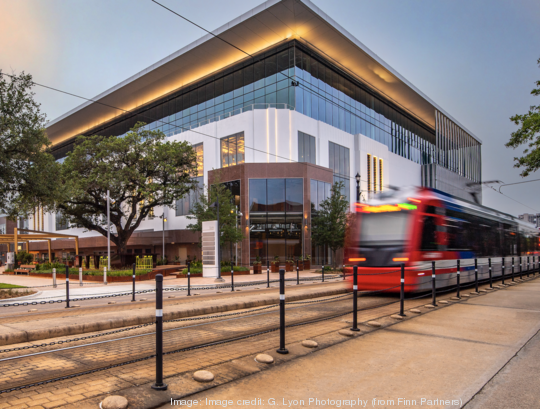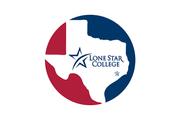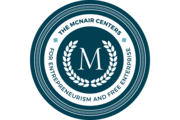
Cities are facing a fundamental reset of how people work, live, shop, and go about our everyday lives. This reset, as Richard Florida, one of the world’s leading experts on the creative class and its relationship to urban economics, said at The Kinder Institute Forum, affords us a “once in a century opportunity to reimagine and build better communities and workplaces.”
As Houston’s innovation leaders, we must reimagine how our communities and workplaces sustain creative talent. These human creative capabilities generate value (Florida & Kenney, 1993, as cited in Morisson, 2015). By identifying, developing, retaining, funding, and showcasing our creative talent, we bolster our city’s economy, society, and culture. While creativity may be seen as an exclusive trait, innate to a few individuals, creativity is a skill anyone can develop. Creativity is associated with thinking out of the box, originality, flexibility, tolerance of ambiguity—and more. As Albert Einstein said, “Creativity is intelligence having fun.”
Sustaining creative talent starts with enabling individuals to discover and develop their creative strengths. One way for individuals to do this is through the Reisman Diagnostic Creativity Assessment. When applied on a broad scale, especially in the context of an innovation district, this personal development leads to more and deeper opportunities for creative talent to drive their careers, systems-level innovation, and economic production and resilience.
Places such as The Ion and Ion District enable individuals to discover, apply, and amplify their creativity through collaboration among people with diverse perspectives and experiences. This diversity accelerates opportunities for idea generation that can lead to more sustainable solutions. “The Ion District focuses on accessibility, integration, and connectivity. As such, it is already becoming the place where creative individuals seeking to pivot their careers, entrepreneurs transforming their ideas into businesses, and established corporations thinking existentially about their future are all gravitating,” noted Ryan M. LeVasseur, Managing Director of Direct Real Estate at Rice Management Company (RMC).
As we design Houston’s future, we must focus on our traditional sectors, including oil and gas, healthcare, aerospace, software, and clean energy. Through purposeful urban planning, we must also support our creatives, whether they are in the music, restaurant, art, theatre, writing and publication, media, marketing, esports, gaming, and other industries. Urban planning plays an integral role in fostering entrepreneurship (Jacobs 1961, as cited in Morisson, 2015). Houston and the region's entrepreneurial and innovation ecosystem, economic resilience, and talent pipeline depend on how we build the physical and digital infrastructure that sustains our communities and creative talent. Three mechanisms help us build strong urban infrastructure to foster creativity:
Access to an innovation-focused community
Constructing places that foster creativity is crucial. Intentionally designing a built environment that itself promotes serendipitous collisions is even more important. Spaces such as traditional office buildings can be siloed and can hinder an individual's ability to meet people with different ideas and experiences. Using the built environment to co-locate and cross-pollinate programs and professionals from different sectors is a boon to developing creative talent because it enables access to an innovation-focused community with diversity at its core. This results in more sustainable and resilient solutions that build better, and more inclusive, communities and workplaces.
Intentionally co-locating a broad range of startups, investors, technology and software companies, educational (STEM) programs, researchers, policy makers, and prototyping labs fosters these serendipitous collisions. RMC and its partners are expanding the Ion District as the central space in Houston’s innovation ecosystem that amplifies Houston’s creative talent. “This makes cities more sustainable,” said Richard Johnson, Executive Director for Sustainability at Rice University. “While we face numerous sustainability challenges that are global in scale, in many instances the solutions are distinctly local. We’ll need to tap deep place-based knowledge to generate, develop, and implement those local solutions.” The Ion and Ion District are designed as places where individuals can collaborate and innovate.
Access to networking opportunities
Increasing personal connectivity through virtual and in-person networking also builds strong infrastructure that fosters creativity in urban areas. Meeting a broad range of subject matter experts and civically minded decision makers exposes individuals to different ideas and thoughts, generating new ideas and solutions. Online networking is a great entry point for a city seeking to establish its regional, national, and global presence as a resiliently diversified economy.
In-person networking events bring the breadth of a city’s diverse populous and tech leaders, such as The Ion’s partners Microsoft, Chevron Technology Ventures, Baker Botts, Maersk, BP, and Intel to one centralized place. With in-person environments, brainstorming can be more spontaneous and lead to new solutions. Accessible and free networking events enable individuals to share ideas in social and practical ways—and gain access to their peers’ networks.
Access to education and training
A third mechanism for building strong infrastructure is education and training. These opportunities enable individuals to delve deeper into content knowledge than do networking events. These opportunities also help individuals hone their creative strengths and expertise in a particular domain. They can be delivered in many forms, including workshops, virtual reality experiences, bootcamps, and workforce development and accelerator programs—or even walking around a place and noticing how place-making and design thinking intertwine.
Accelerator programs, in particular, provide founders, entrepreneurs, and developing companies access to curricula, mentorship, investors, and other support. With four accelerator programs, The Ion’s Accelerator Hub enables startups in different accelerators to access knowledge and mentorship through lunch and learns and to create their own network of peers.
Providing access to community, networks, and education for creative talent from all sectors helps build sustainable urban infrastructure. This infrastructure connects stakeholders, such as corporations, startups, academic institutions, and investors, in an innovation ecosystem, which further promotes more creativity and innovation. These connections ultimately result in a more diversified talent pipeline and resilient economy—and a city prepared for the future.
+++
Dr. Christine Galib is the Senior Director of Programs at The Ion. She holds her bachelor’s from Princeton University, master’s from the University of Pennsylvania, and doctorate from Drexel University, in educational leadership, management, creativity, and innovation. Her speaking, writing, and research interests include entrepreneurial mindset development, creativity, innovation, leadership, systems thinking, mindfulness, wellness, and apologetics.

